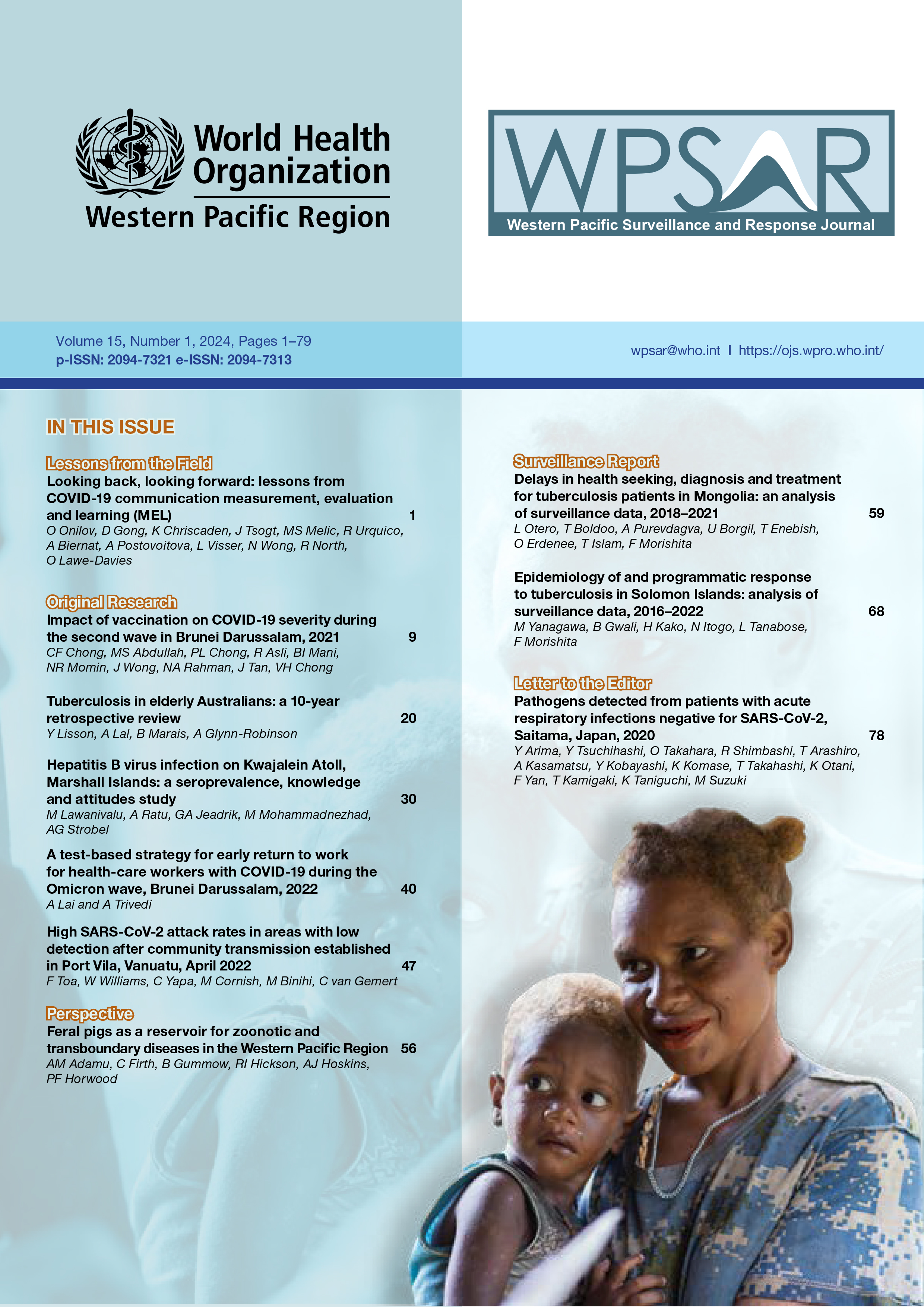Tuberculosis in elderly Australians: a 10-year retrospective review
DOI:
https://doi.org/10.5365/wpsar.2024.15.1.1040Keywords:
Mycobacterium tuberculosis, therapy, aged, migrants, epidemiology, AustraliaAbstract
Objective: This report describes the epidemiology of active tuberculosis (TB) in elderly Australians (>=65 years) with analysis of the factors associated with TB disease and successful treatment outcomes.
Methods: A retrospective study of TB cases reported to the National Notifiable Diseases Surveillance System over a 10-year period from 2011 to 2020 was conducted. Cases were stratified by sex, age, risk factors, drug resistance, treatment type and outcome. Notification rates and incidence rate ratios with 95% confidence intervals were calculated and factors associated with treatment success analysed using multivariable logistic regression.
Results: A total of 2231 TB cases among elderly people were reported over the study period, with a 10-year mean incidence rate of 6.2 per 100 000 population. The median age of cases was 75 years (range 65–100 years); most were male (65%) and born overseas (85%). Multivariable analysis found that successful treatment outcome was strongly associated with younger age, while unsuccessful treatment outcome was associated with being diagnosed within the first 2 years of arrival in Australia, ever having resided in an aged-care facility and resistance to fluoroquinolones.
Discussion: Compared to other low-incidence settings in the Western Pacific Region, TB incidence in elderly people is low and stable in Australia, with most cases occurring among recent migrants from TB-endemic settings. Continued efforts to reduce TB importation and address migrant health, especially among elderly people, are important.

